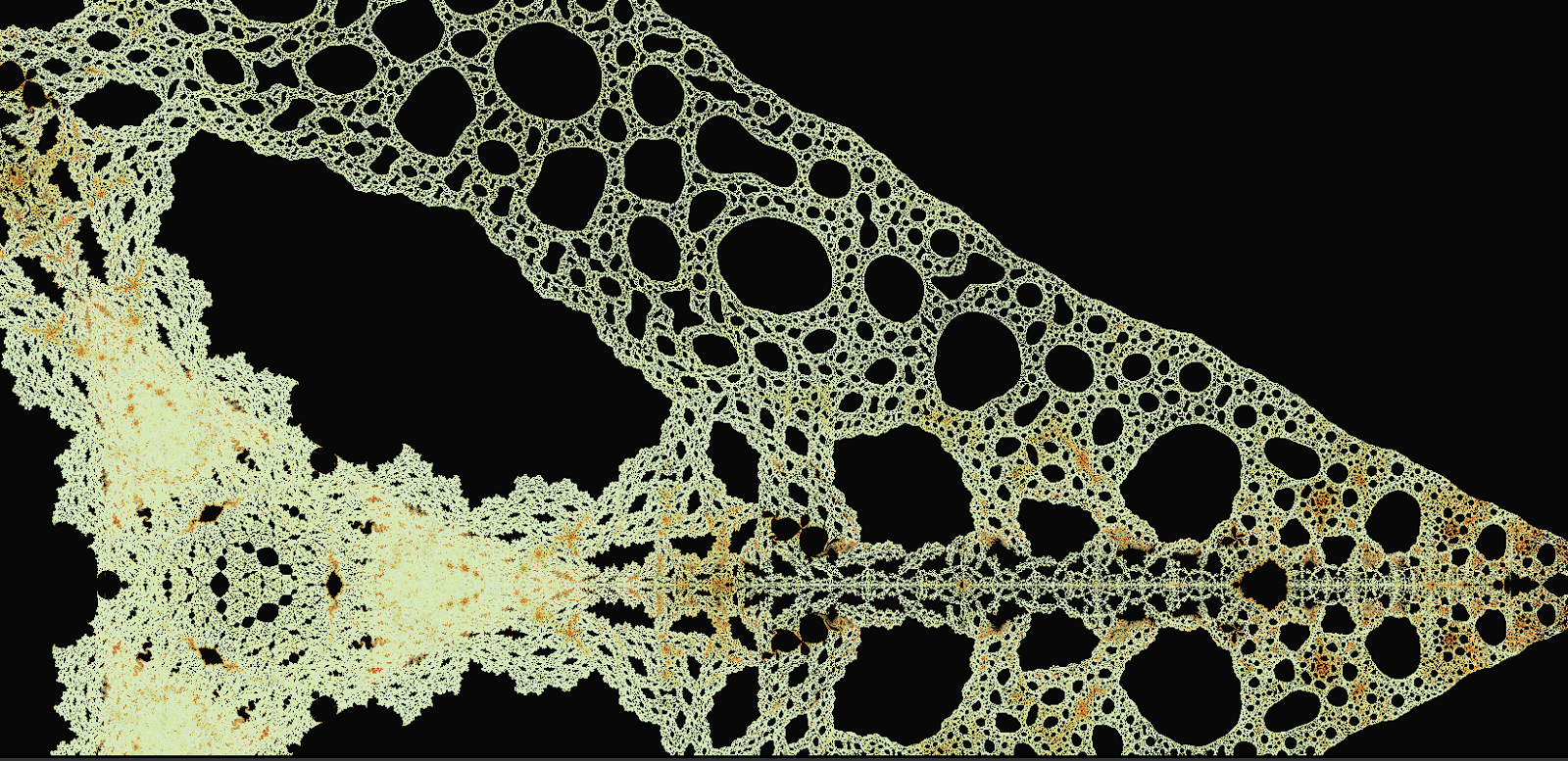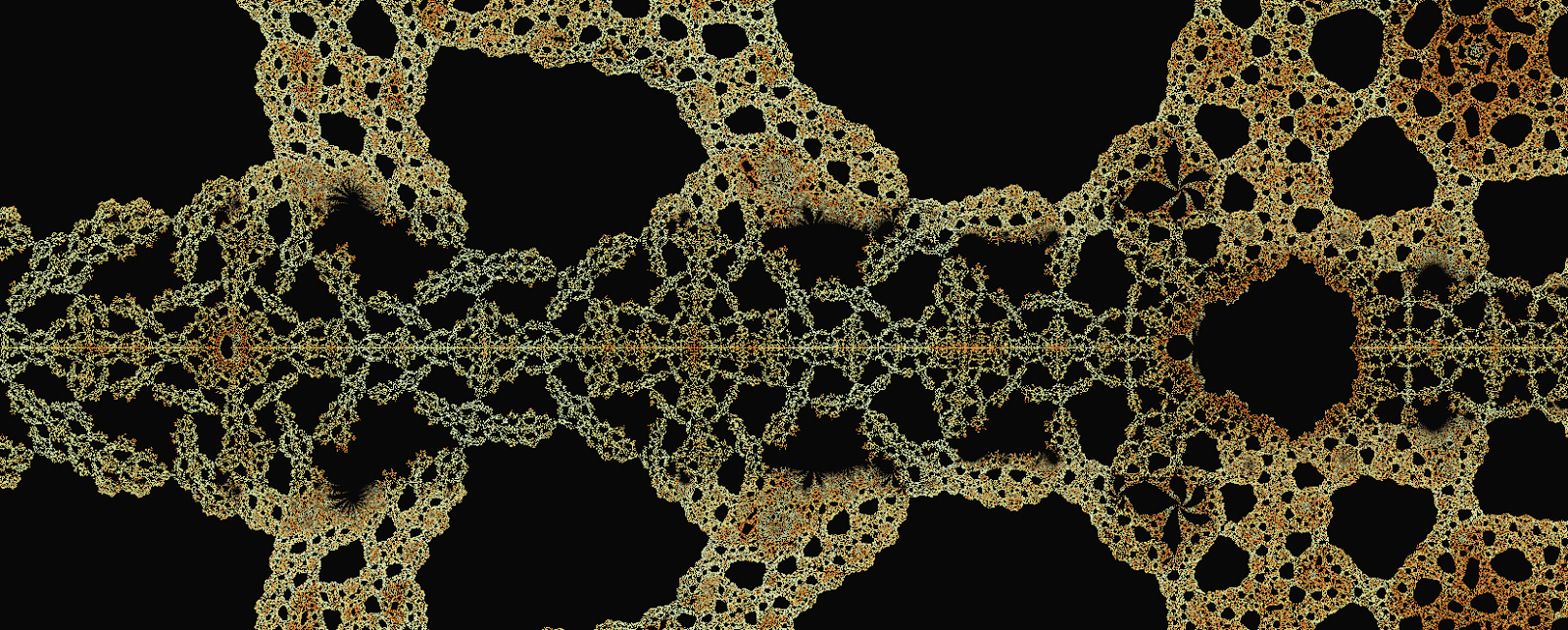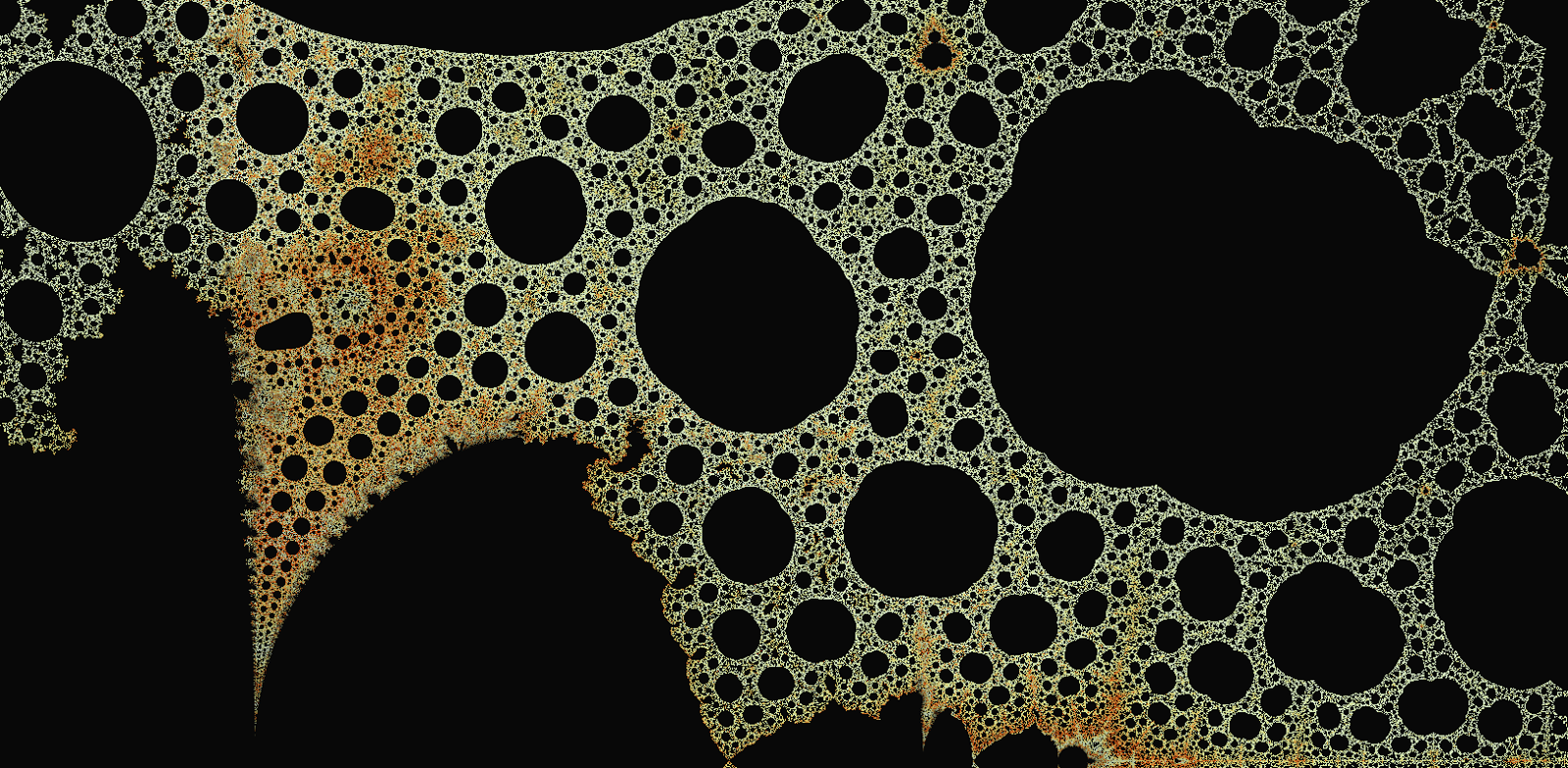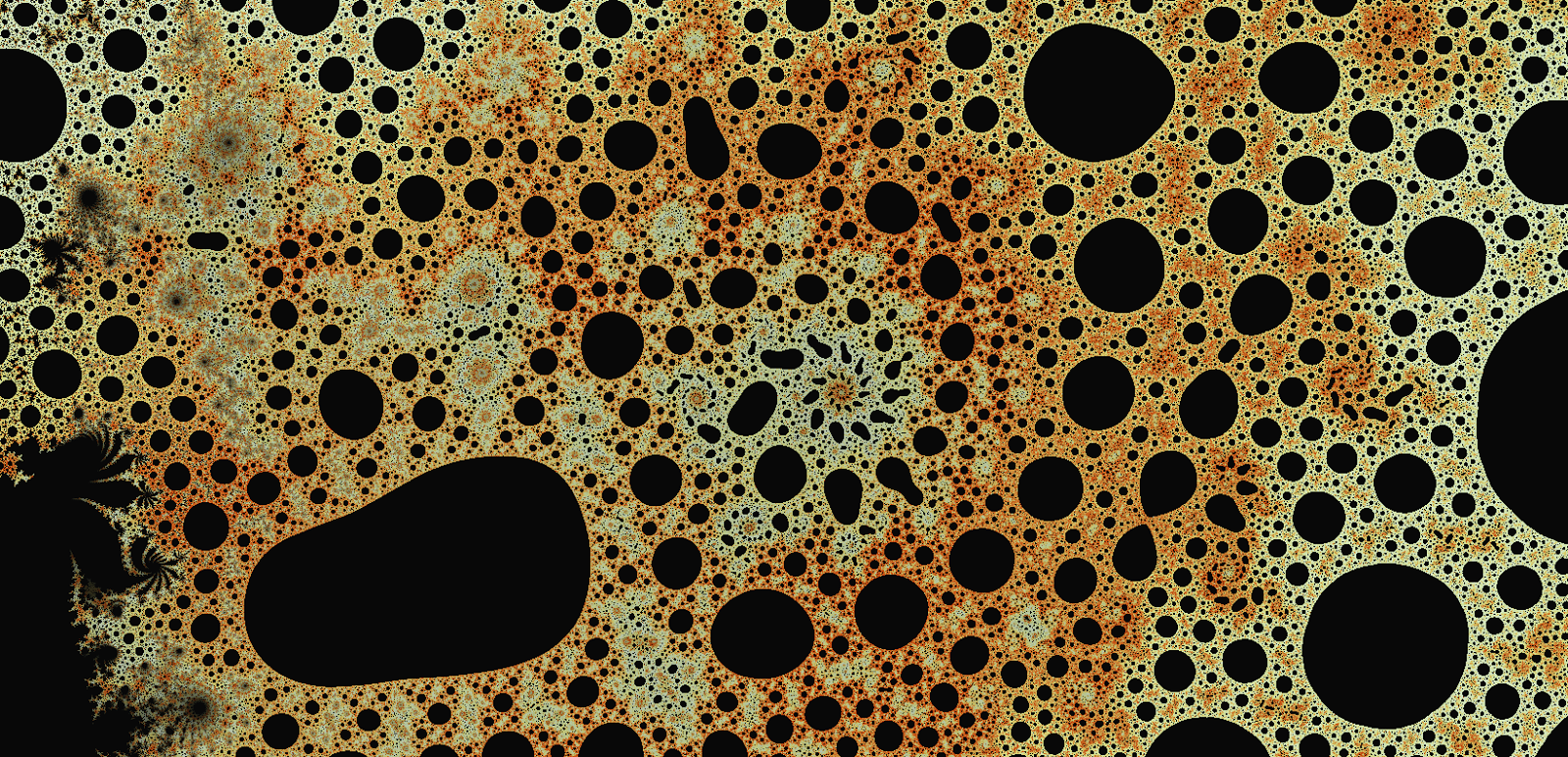Knighty:
Here is the stereographic projection variant. More "whipped cream" but the julias are interesting
I haven't checked the code, but the stereographic projection should not affect the formula or the shape, it should just be a more economical way to go from the complex plane to the sphere, and back again.
In your formula(s) there are always points where the derivative vanishes (=0).(there are 6 here). those have 180° rotation. Is it possible to modify the formula in order to transform those points from parabolic (dervative=0) to conical (derivative!=0)? I think that would reduce a lot the stretching.
You are right, that is what I was doing in the two links at the start of this topic. I didn't have an analytic formula so I was doing it using a lookup table. It would make the formula 'quasi-conformal' in that the stretch would be bounded (maximum eccentricity of 2 I think), however it would make the formula non-smooth at those 6 points.
(I'm fairly sure an analytic formula could be be made using a weighted average of conical transforms at those 6 points, and 3 poles and 4 points that go to zero but scale by about 2. The weighting being something like 1/distance to feature, on the sphere).
It seems quite difficult to get a nearly conformal transform In 3D. It is like there is not enought space/room. Maybe in hyperbolic space...?
Exactly conformal is impossible due to Liouville's theorem, since the only conformal 3d transforms are translations, rotations, dilation (scale) and sphere inversions, and combinations of these. The same is true in hyperbolic space and in dimensions more than 3d. But *nearly* conformal (quasiconformal) is an interesting question, I got an average eccentricity of about 1.5 in this post-
http://www.fractalforums.com/the-3d-mandelbulb/a-new-3d-mandelbrot-like-fractal/msg12013/#msg12013My previous 2d mandelbrots were wrong (I was adding c in the numerator). I have also written a more correct bailout condition and the results are very cool:

(the full shape is a rough triangle)

and for the dihedral fold version:



Try it out, I saved it here:
http://hirnsohle.de/test/fractalLab/ under 'Tetrahedral fold' in the library. You can change the fractal type to Dihedral in the constants tab.


















